3 Tips for High Blood Pressure Education Month
May is National High Blood Pressure Education Month!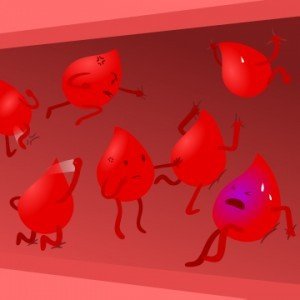 According to the Centers for Disease Control and Prevention (CDC), "In the United States, nearly one in three adults has hypertension, but only about half (47%) of those have it under control."Hypertension is another word for high blood pressure, and blood pressure is the force of blood against artery walls. If the blood pushes against the arteries too hard for too long, serious health problems can develop. In fact, high blood pressure is often called "the silent killer" because it has no symptoms but can seriously damage your brain, heart, and kidneys. The CDC revealed that "Each day in the United States, nearly 1,000 deaths are associated with hypertension." Moreover, roughly 67 million Americans already have high blood pressure.To find out your blood pressure, all you need is a blood pressure test. You can have a test done at your doctor's office, and it's totally painless. Here's what to make of your blood pressure numbers...
According to the Centers for Disease Control and Prevention (CDC), "In the United States, nearly one in three adults has hypertension, but only about half (47%) of those have it under control."Hypertension is another word for high blood pressure, and blood pressure is the force of blood against artery walls. If the blood pushes against the arteries too hard for too long, serious health problems can develop. In fact, high blood pressure is often called "the silent killer" because it has no symptoms but can seriously damage your brain, heart, and kidneys. The CDC revealed that "Each day in the United States, nearly 1,000 deaths are associated with hypertension." Moreover, roughly 67 million Americans already have high blood pressure.To find out your blood pressure, all you need is a blood pressure test. You can have a test done at your doctor's office, and it's totally painless. Here's what to make of your blood pressure numbers...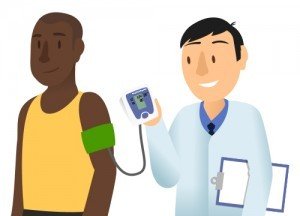 Systolic Blood Pressure (Top Number)
Systolic Blood Pressure (Top Number)
- Less than 120: Normal
- 120-139: Prehypertension
- 140-159: Stage 1 High Blood Pressure
- 160 or More: Stage 2 High Blood Pressure
Diastolic Blood Pressure (Bottom Number)
- Less than 80: Normal
- 80-89: Prehypertension
- 90-99: Stage 1 High Blood Pressure
- 100 or More: Stage 2 High Blood Pressure
Remember, "High blood pressure usually has no symptoms, but it can cause serious problems such as stroke, heart failure, heart attack and kidney failure. You can control high blood pressure through healthy lifestyle habits and taking medicines, if needed" (U.S. National Library of Medicine).And that, ladies and gentlemen, brings us to the point of this post. Today we're going to talk about 3 ways to reduce your risk of high blood pressure or bring your blood pressure back to normal if you've already got hypertension.Tip #1: Skip Sodium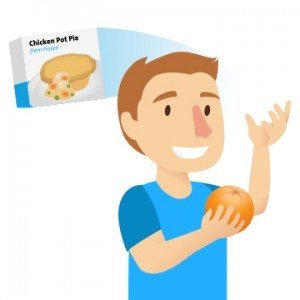 According to the National Heart, Lung, and Blood Institute, "you can take action to prevent high blood pressure by reducing sodium (salt) intake." The CDC backs up this claim, asserting "Most Americans consume too much sodium, and it raises blood pressure in most people." Reduce the salt in your diet by cutting back on frozen, canned, and restaurant foods (huge sources of sodium), and checking the Nutrition Facts panel on the foods you buy. Choose options with less salt. Remember, the Dietary Guidelines for Americans advises people to "Reduce daily sodium intake to less than 2,300 milligrams (mg) and further reduce intake to 1,500 mg among persons who are 51 and older and those of any age who are African American or have hypertension, diabetes, or chronic kidney disease."Tip #2: Eat More Fruits and Vegetables
According to the National Heart, Lung, and Blood Institute, "you can take action to prevent high blood pressure by reducing sodium (salt) intake." The CDC backs up this claim, asserting "Most Americans consume too much sodium, and it raises blood pressure in most people." Reduce the salt in your diet by cutting back on frozen, canned, and restaurant foods (huge sources of sodium), and checking the Nutrition Facts panel on the foods you buy. Choose options with less salt. Remember, the Dietary Guidelines for Americans advises people to "Reduce daily sodium intake to less than 2,300 milligrams (mg) and further reduce intake to 1,500 mg among persons who are 51 and older and those of any age who are African American or have hypertension, diabetes, or chronic kidney disease."Tip #2: Eat More Fruits and Vegetables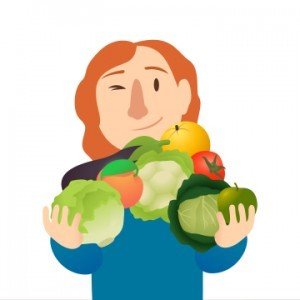 You know what's really low in sodium? Fruits and vegetables!Of course, replacing sodium-rich foods with fresh fruits and vegetables isn't the only way you can use them to reduce your risk of hypertension. In fact, the CDC counsels people to "Eat a healthy diet that is high in fruits and vegetables and low in sodium, saturated fats, trans fat, and cholesterol" in order to reduce their risk of high blood pressure. Fruits and vegetables are loaded with healthful nutrients that reduce the risk of chronic disease, help with weight control, and even manage blood sugar. According to the study, Fruit and vegetable consumption and the risk of hypertension determined by self measurement of blood pressure at home, "It is well recognized that high fruit and vegetable consumption is associated with a reduction of blood pressure (BP) measured by conventional BP measurement in Western countries." After processing the data they collected, the authors of the study concluded "high-level consumptions of fruits, vegetables, potassium, and vitamin C are associated with a significantly lower risk of hypertension." So stock up on fresh fruits and vegetables today!Tip #3: Stay Active
You know what's really low in sodium? Fruits and vegetables!Of course, replacing sodium-rich foods with fresh fruits and vegetables isn't the only way you can use them to reduce your risk of hypertension. In fact, the CDC counsels people to "Eat a healthy diet that is high in fruits and vegetables and low in sodium, saturated fats, trans fat, and cholesterol" in order to reduce their risk of high blood pressure. Fruits and vegetables are loaded with healthful nutrients that reduce the risk of chronic disease, help with weight control, and even manage blood sugar. According to the study, Fruit and vegetable consumption and the risk of hypertension determined by self measurement of blood pressure at home, "It is well recognized that high fruit and vegetable consumption is associated with a reduction of blood pressure (BP) measured by conventional BP measurement in Western countries." After processing the data they collected, the authors of the study concluded "high-level consumptions of fruits, vegetables, potassium, and vitamin C are associated with a significantly lower risk of hypertension." So stock up on fresh fruits and vegetables today!Tip #3: Stay Active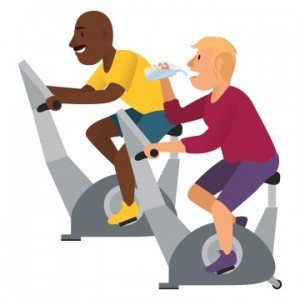 "Physical activity can help you maintain a healthy weight and lower your blood pressure. For adults, the Surgeon General recommends 2 hours and 30 minutes of moderate-intensity exercise, like brisk walking or bicycling, every week. Children and adolescents should get 1 hour of physical activity every day" (source).What more do you need to know? Being physically active can help you reduce your risk of hypertension in two ways -- by directly helping lower your blood pressure, and by helping you manage your weight, which is another high blood pressure risk factor. According to the National Heart, Lung, and Blood Institute, "Being active and maintaining a healthy weight also can help you prevent high blood pressure." Talk with your doctor about fun ways to get active as soon as you can.There's lots more to learn about blood pressure. Check out these great free sources of more information...
"Physical activity can help you maintain a healthy weight and lower your blood pressure. For adults, the Surgeon General recommends 2 hours and 30 minutes of moderate-intensity exercise, like brisk walking or bicycling, every week. Children and adolescents should get 1 hour of physical activity every day" (source).What more do you need to know? Being physically active can help you reduce your risk of hypertension in two ways -- by directly helping lower your blood pressure, and by helping you manage your weight, which is another high blood pressure risk factor. According to the National Heart, Lung, and Blood Institute, "Being active and maintaining a healthy weight also can help you prevent high blood pressure." Talk with your doctor about fun ways to get active as soon as you can.There's lots more to learn about blood pressure. Check out these great free sources of more information...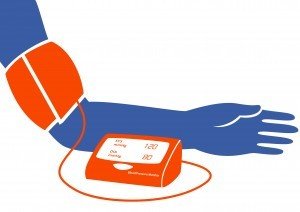 Food and Health
Food and Health
- Blood Pressure 101
- Blood Pressure Quiz
- Heart Disease Risk Factors
- Get Low: Make Low-Sodium Choices
- Medication and High Blood Pressure: A News Update
- Quiz: Are You Good to Your Heart?
- Stroke Risk Update: Breaking News
Around the Web
- Dietary Guidelines for Americans -- U.S. Department of Agriculture and the U.S. Department of Health and Human Services
- Fruit and vegetable consumption and the risk of hypertension determined by self measurement of blood pressure at home -- U.S. National Library of Medicine
- High Blood Pressure -- U.S. National Library of Medicine
- National High Blood Pressure Education Month -- Centers for Disease Control and Prevention
- Power Down in May for National Blood Pressure Education Month -- Centers for Disease Control and Prevention
- Preventing High Blood Pressure: Healthy Living Habits -- Centers for Disease Control and Prevention
- What is High Blood Pressure? -- National Heart, Lung, and Blood Institute
There are lots of National Blood Pressure Education Month resources and materials in the Nutrition Education Store. Here are some of the most popular options...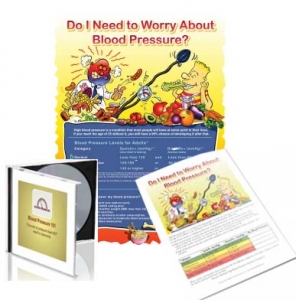

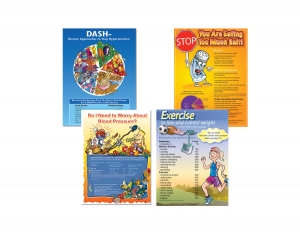 At Food and Health Communications Inc, we are here when you want to look your very best.
At Food and Health Communications Inc, we are here when you want to look your very best.


